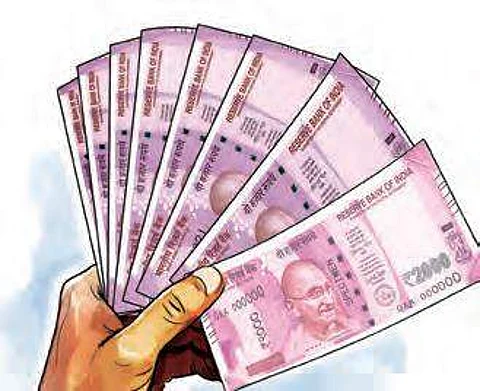

Both Union Government and State governments are bound by the Fiscal Responsibility and Budget Management(FRMB) Act, 2003. Accordingly, both have to limit fiscal deficit, revenue deficit and debt within pre-determined levels.
There was some relaxation in FRBM limits during the pandemic period. The borrowing limits were raised from 3% of GDP/GSDP to 3.5%. Similar relaxation was permitted in the case of revenue deficit and fiscal deficit as well. However, after the removal of pandemic-induced lockdown, the Centre has begun to tighten the restrictions on the states while continuing to violate them.
Several states have frowned this double standard and Kerala is on the forefront of it. The former finance minister Dr Thomas Isaac and the present one Mr. K.N Balagopal have been harping on this issue for quite some time. Both argue that Centre’s fiscal performance is much worse than that of the states. The Centre has only scant regard for FRBM while forcing the states to adhere to it.
The Centre has insisted that the off-budget borrowings of Kerala through Kerala Infrastructure Investment Fund Board Board(KIIFB) and Kerala Social Security Pension Limited(KSSPL) come within the borrowing limits of Kerala. This is despite its massive off-budget borrowing for highway development through National Highway Authority of India (NHAI).
On the face of it, it would appear that the states are making a valid point. The Centre should put its house in order and serve as an example to states. If the Centre can violate the FRBM limit, why the states should be forced to adhere to it? There are two underlying assumptions behind this specious argument. First, the Centre and states are on equal footing in terms of their mandates and fiscal capacity. Second, both are separate entities. A closer scrutiny will reveal that both these assumptions are unrealistic. Coming to the first one, the Centre has the mandate of ensuring the fiscal and monetary stability of the country. In a globalised scenario, the Centre has to consider the economic trends across the world and its impact on country’s balance of payment and stability of the currency.
Domestic resource mobilisation and expenditure policies will have to be tailored to these developments. This warrants occasional deviations from the fiscal roadmap prescribed by the FRBM Act. But the long-term objective should be to move along with it. As for the second, a federal set up is essentially a division of powers and responsibilities. And this division has the underpinnings of economic principles and practices and are meant to complement rather than compete each other. For example, the off budget borrowing by the Centre for national highways help the development of the whole country and states.
The fiscal capacity of the Centre is another factor. Compared to the states, the Centre’s fiscal capacity is enormous. Besides, it can borrow from international financial institutions and monetise deficits by printing currency. While the fiscal capacity of the states is limited, their expenditure responsibilities are higher. In order to bridge this gap, the Constitution has provided for Finance Commissions to be appointed once in 5 years. Over the years, federal transfers to the states through the Finance Commissions have increased. The state are right in arguing for a larger share of the federal resources.
But all these do not mean that the liberty taken by the Centre can be claimed as a right by states. If all 28 states do so, the fiscal stability of the country will be in jeopardy. The recent developments in the neighbouring countries of Srilanka, Nepal and Bangladesh also seem to have influenced Centres’ actions in this regard.
If one goes deeper into this controversy, it will be revealed that the basic issue is the unwillingness of popular governments at both levels to mobilise public resources. While the tax-GDP ratio of developed countries hovers around 35%-40%, it is as low as 17 % in our country. Kerala is the state which registered highest increase in taxable capacity in the post-independence period.
According to National Sample Survey Organisation’s consumer expenditure survey, Kerala stood at 8th position in per capita consumer expenditure in 1972-73. Kerala climbed to 3rd position in in 1983 and to 1st position in 1999-2000. As per the last survey for 2011-12, Kerala continues to occupy the 1st position. This however is not reflected in the resource mobilisation efforts of the state.
In the first 10 years of Kerala’s formation i.e. 1957-58 to 1965-66, Kerala’s share in the total own revenue mobilised by all states put together was 4.45%. In 2019-20, the latest year for which we have final figures, Kerala’s relative share has fallen to 4.34%. What is more, over 60% of what Kerala mobilises comes from four sources-liquor, lottery, motor vehicles and petrol. There is no other state in the country where the poor and marginalised sections contribute so much public resources to the exchequer.
Competitive populism assiduously pursued by the two competing political fronts of Kerala have created a situation in which public resource mobilisation is almost impossible. Now the political class cannot imagine anything other than borrowing.
They are unable to tell the people on their face that government is an entity that is financed by the contributions of people. The clamour is for more powers to borrow and spend and not tax and spend.
( The writer is a former faculty of Gulati Institute of Finance and Taxation, Thiruvananthapuram)